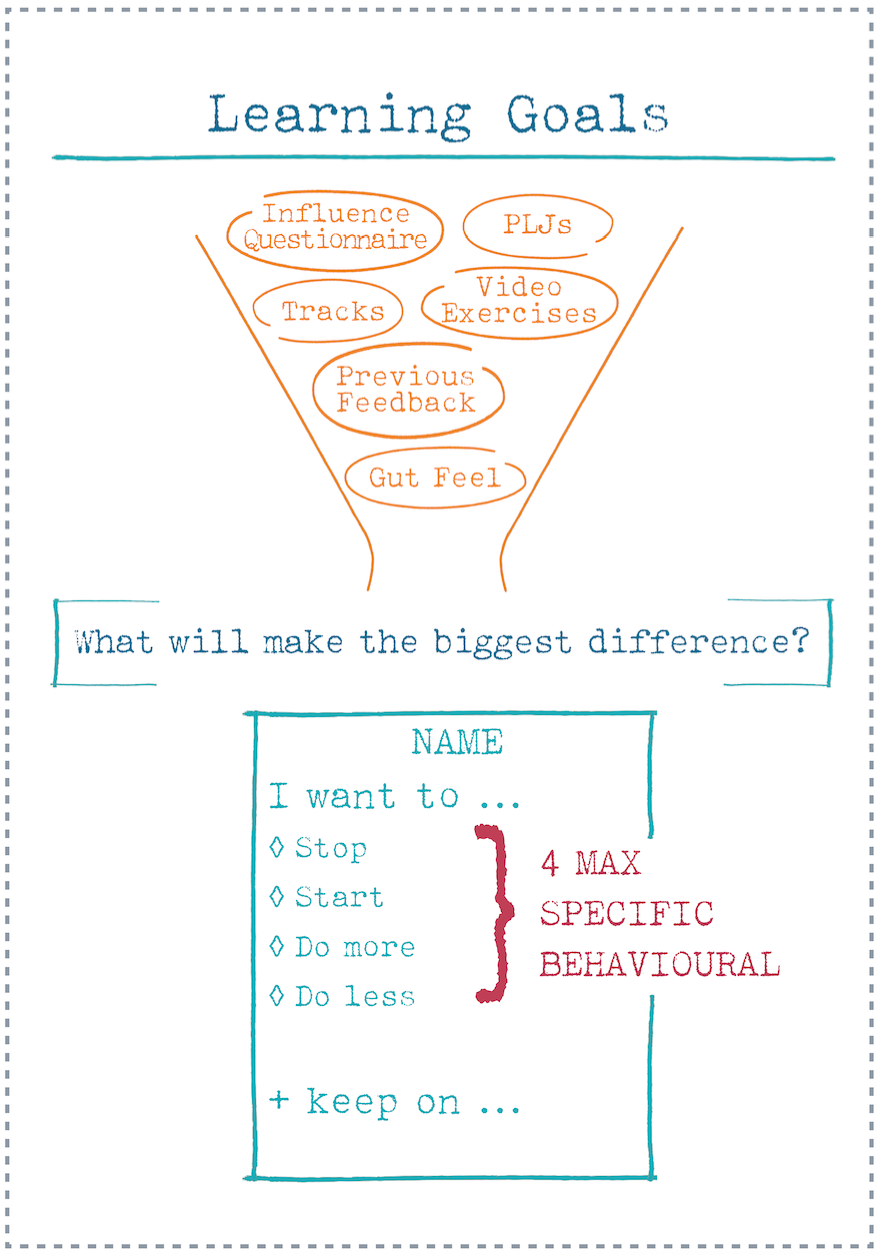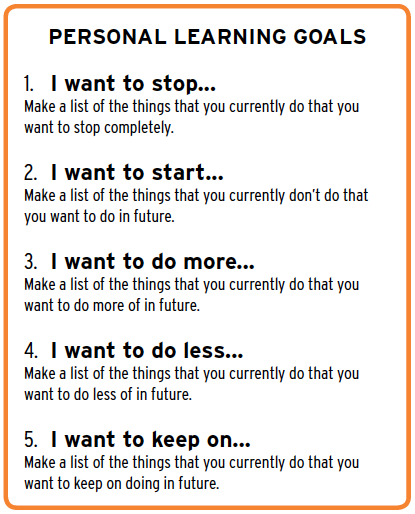Now you will set personal learning goals for the Skill Practice phase of the programme.
You may change these goals later on, but you should focus on one Style or skill area for your early practice stages. Multiple goals will dilute your effort and your influence attempts will continue to be marked by high energy and low impact.
Build on your present strengths. In setting personal learning goals, be aware of your present capabilities. They have been the source of your influence success until now, and they will be the foundation upon which to build new skills. You can capitalise on these skills by better organising and planning, sharpening their use, and focusing more closely on your Influence Objective.
Decide which new skills to develop.
You will probably want to work on at least one Style that you now underuse or use ineffectively. To decide, refer to all of your Personal Learning Journal notes from the Tracks, particularly the final section on values conflicts and blocks. Review your notes from the Self-Assessment Exercises. Get out your pre work questionnaire results and draw on all of your self-assessment materials to make this important decision.
Test your goals by doing a cost-benefit analysis.
It takes energy and commitment to gain skill and confidence in using a new Influence Style. Doing a cost-benefit analysis as part of your goal-setting will insure a reasonable return on your investment. First, decide what the potential benefits might be of achieving your learning goal. Will the results be marginal or will there be a dramatic increase in your effectiveness? If the benefits are great, then you can afford to invest a considerable amount of time and energy to reach your goals.

Determine the cost factor in working toward your goals. Consider the distinctions between:
- Skill gaps: Difficulty performing all or part of a Style or Behaviour effectively.
- Value Conflicts: The Style or Behaviour violates your personal values, principles, or standards.
- Blocks: Mental messages and/or physical sensations that interfere with your performance of the Styles or Behaviours.
You already may have some ideas about the nature of your barriers. Some barriers may just be a nuisance. Others may be more formidable. If so, there are several courses of action you can take. You can respect the barrier and set goals to develop or refine other Styles. You can ignore the barrier and learn to live with it (accepting that it will require extra energy and courage to perform the Style). Or, you can work through the barrier and find ways to reduce or remove its detrimental effects on your influence ability.
You now have the data required to make a cost/benefit decision.
Having considered the distinctions among the barriers, assess the energy required to learn the new Styles covered by your learning goals.
Important!
Focus on the goals that will give you the highest payoff for your investment of time and energy!

